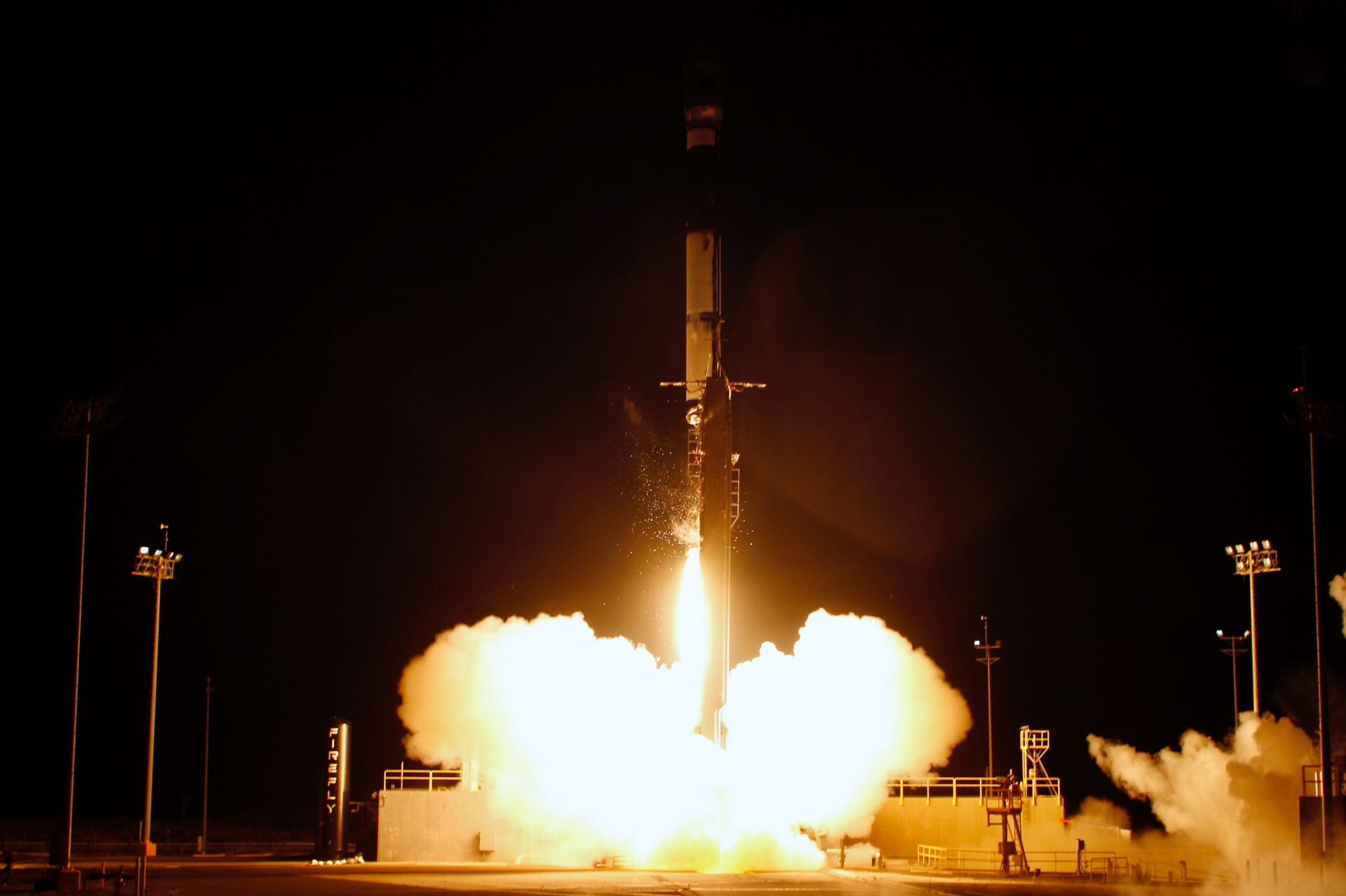ORLANDO, Fla.  Firefly Aerospace plans to make the responsive launch operations it demonstrated for the U.S. Space Force last year the norm for upcoming launches of its Alpha rocket.
Firefly launched the Victus Nox mission for the Space Force Sept. 14, successfully placing a satellite built by Millennium Space into orbit. The launch took place 27 hours after the Space Force gave Firefly formal notice to carry out the launch.
The company completed that work, which included integrating the satellite with the launch vehicle and setting up the rocket on the launch pad, within 24 hours, the goal for the mission. The company then waited three hours at the request of the Space Force â€Å“to get the exact right launch point†for the mission, said Brett Alexander, chief revenue officer of Firefly, during a Feb. 1 presentation at the SpaceCom conference here.
While Victus Nox was a demonstration of responsive launch capabilities, he said the company planned to follow similar procedures on future launches, whether they are for commercial or government customers. â€Å“Once you operate at that timeline, you don’t want to go back to a slower pace,†he said.
That included the one Alpha launch that Firefly has performed since Victus Nox, a launch of a technology demonstration satellite Dec. 22. Alexander said that, on the first launch attempt two days earlier, the company went through the same pre-launch preparations in 19 hours before scrubbing because of weather.
That launch, though, was only a partial success after the vehicle’s second stage did not properly relight to circularize the orbit. Lockheed said Jan. 31 that it expects the satellite to reenter in February, having completed many of the planned objectives of the mission.
A mishap investigation is still underway, Alexander said. â€Å“We think we understand the root cause and it’s something that we can fix,†he said, not elaborating on that potential cause.
Bill Weber, chief executive of Firefly, offered a similar assessment in a Jan. 31 statement. â€Å“The subsequent investigation is progressing very well, and we will have more information to share in the weeks ahead as we wrap up our review and take corrective action,†he said, noting that both Lockheed and future customers have had â€Å“external oversight†of that investigation.
Alexander said the company is planning four Alpha launches this year, the same figure the company offered before the December launch mishap. â€Å“We don’t think that’s going to slow us down.â€ÂÂ
Firefly, working with Northrop Grumman, is also continuing development of two new launch vehicles. The Antares 330 will replace the Ukrainian-built first stage and Russian engines of the earlier Antares 230 with a new first stage built by Firefly with its Miranda engines. That vehicle is still scheduled for a first launch as soon as mid-2025, said Nicole Jordan, who leads business development and strategy for space launch programs at Northrop’s launch vehicles business unit.
Antares 330 will be followed â€Å“shortly thereafter†by MLV, she said in the SpaceCom presentation. That vehicle will replace the Northrop-built solid-fuel second stage with one developed by Firefly using a vacuum-optimized Miranda engine, as well as a five-meter payload fairing developed by Northrop.
The MLV will be able to place up to 16 metric tons into low Earth orbit and three metric tons into geostationary transfer orbit, launching from the existing Antares pad at Wallops Island, Virginia. â€Å“The MLV really fills a void in the marketplace today,†Alexander said, offering a medium-lift capacity once provided by Soyuz and Delta 2.
He added the companies would incorporate a similar level of responsiveness to MLV operations that Firefly is doing with Alpha. â€Å“It may not be 24 hours per se, but we’re going to bring the same responsive timeline mentality to the launch operations.â€ÂÂ
Related
Read the original article here


